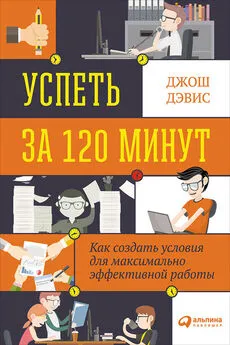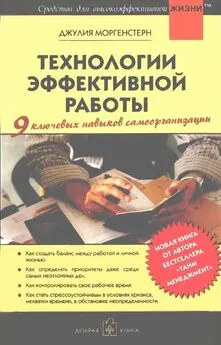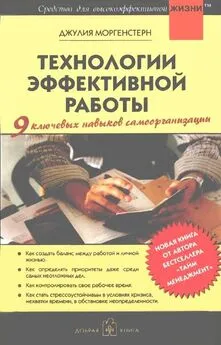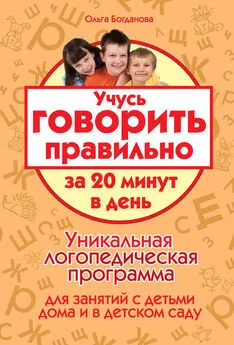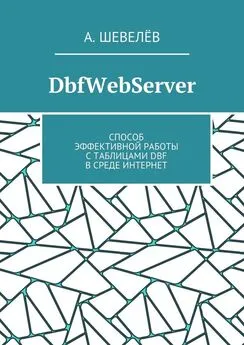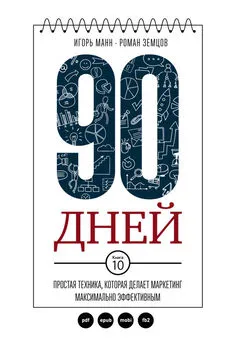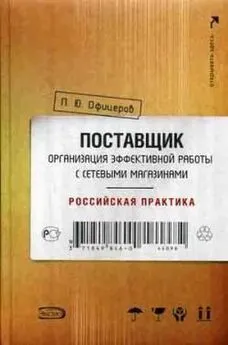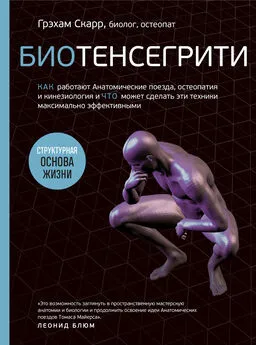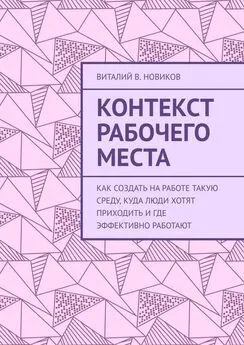Джош Дэвис - Успеть за 120 минут. Как создать условия для максимально эффективной работы
- Название:Успеть за 120 минут. Как создать условия для максимально эффективной работы
- Автор:
- Жанр:
- Издательство:Альпина Паблишер
- Год:2016
- Город:Москва
- ISBN:978-5-9614-4188-8
- Рейтинг:
- Избранное:Добавить в избранное
-
Отзывы:
-
Ваша оценка:
Джош Дэвис - Успеть за 120 минут. Как создать условия для максимально эффективной работы краткое содержание
Успеть за 120 минут. Как создать условия для максимально эффективной работы - читать онлайн бесплатно ознакомительный отрывок
Интервал:
Закладка:
95
Emma Childs and Harriet de Wit, «Subjective, Behavioral, and Physiological Effects of Acute Caffeine in Light, Nondependent Caffeine Users» [in English], Psychopharmacology (Berlin) 185, no. 4 (2006): 514–23.
96
H. A. Young and D. Benton, «Caffeine Can Decrease Subjective Energy Depending on the Vehicle with Which It Is Consumed and When It Is Measured» [in English], Psychopharmacology (Berlin) 228, no. 2 (2013): 243–54.
97
Парацельс, цит. по «Викицитатам», из «Die Dritte Defension Wegen Des Schreibens Der Neuen Rezepte,» Septem Defensiones 1538, vol. 2, (Darmstadt, 1965): 510.
98
Astrid Nehlig, «Is Caffeine a Cognitive Enhancer?» Journal of Alzheimer's Disease 20, suppl. 1 (2010): S85–94.
99
Karen Alsene et al., «Association Between A2a Receptor Gene Polymorphisms and Caffeine-Induced Anxiety» [in English], Neuropsychopharmacology 28, no. 9 (2003): 1694–702.
100
Tad T. Brunyé et al., «Caffeine Modulates Attention Network Function,» Brain and Cognition 72, no. 2 (2010): 181–88.
101
A. S. Attwood, S. Higgs, and P. Terry, «Differential Responsiveness to Caffeine and Perceived Effects of Caffeine in Moderate and High Regular Caffeine Consumers» [in English], Psychopharmacology (Berlin) 190, no. 4 (2007): 469–77.
102
Peter J. Rogers et al., «Faster but Not Smarter: Effects of Caffeine and Caffeine Withdrawal on Alertness and Performance» [in English], Psychopharmacology (Berlin) 226, no. 2 (2013): 229–40.
103
Meagan A. Howard and Cecile A. Marczinski, «Acute Effects of a Glucose Energy Drink on Behavioral Control,» Experimental and Clinical Psychopharmacology 18, no. 6 (2010): 553–61.
104
David A. Camfield et al., «Acute Effects of Tea Constituents L-Theanine, Caffeine, and Epigallocatechin Gallate on Cognitive Function and Mood: A Systematic Review and Meta-Analysis,» Nutrition Reviews 72, no. 8 (2014): 507–22.
105
James L. Szalma and Peter A. Hancock, «Noise Effects on Human Performance: A Meta-Analytic Synthesis,» Psychological Bulletin 137, no. 4 (2011): 682–707.
106
Juliane Kämpfe, Peter Sedlmeier, and Frank Renkewitz, «The Impact of Background Music on Adult Listeners: A Meta-Analysis,» Psychology of Music 39, no. 4 (2010): 424–48.
107
Göran B. W. Söderlund et al., «The Effects of Background White Noise on Memory Performance in Inattentive School Children,» Behavioral and Brain Functions 6, no. 1 (2010): 4.
108
Gianna Cassidy and Raymond A. R. MacDonald, «The Effect of Background Music and Background Noise on the Task Performance of Introverts and Extraverts,» Psychology of Music 35, no. 3 (2007): 517–37
109
Patrik Sörqvist and Jerker Rönnberg, «Individual Differences in Distractibility: An Update and a Model,» PsyCh Journal 3, no. 1 (2014): 42–57.
110
«Loudness Comparison Chart (dBA),» South Redding 6-Lane Project, California Department of Transportation, www.dot.ca.gov/dist2/projects/sixer/loud.pdf.
111
«Loudness Comparison Chart (dBA),» http://www.dot.ca.gov/dist2/projects/sixer/loud.pdf.
112
Ravi Mehta, Rui (Juliet) Zhu, and Amar Cheema, «Is Noise Always Bad? Exploring the Effects of Ambient Noise on Creative Cognition,» Journal of Consumer Research 39, no. 4 (2012): 784–99.
113
Russell G. Foster, «Neurobiology: Bright Blue Times,» Nature 433, no. 7027 (2005): 698–99; and David M. Berson, «Phototransduction in Ganglion-Cell Photoreceptors» [in English], Pflügers Archiv: European Journal of Physiology 454, no. 5 (2007): 849–55.
114
Antoine U. Viola et al., «Blue-Enriched White Light in the Workplace Improves Self-Reported Alertness, Performance and Sleep Quality» [in English], Scandinavian Journal of Work, Environment, and Health 34, no. 4 (2008): 297–306. Исследование финансировано компанией Philips Lighting, производящей лампы, использованные в экспериментах.
115
K. C. H. J. Smolders, Y. A. W. de Kort, and S. M. van den Berg, «Daytime Light Exposure and Feelings of Vitality: Results of a Field Study During Regular Weekdays,» Journal of Environmental Psychology 36 (2013): 270–79.
116
F. Ferlazzo et al., «Effects of New Light Sources on Task Switching and Mental Rotation Performance,» Journal of Environmental Psychology 39 (2014): 92–100.
117
Anna Steidle and Lioba Werth, «Freedom from Constraints: Darkness and Dim Illumination Promote Creativity,» Journal of Environmental Psychology 35 (2013): 67–80.
118
Robert Desimone and John Duncan, «Neural Mechanisms of Selective Visual Attention,» Annual Review of Neuroscience 18 (1995): 193–222; Stephanie McMains and Sabine Kastner, «Interactions of Top-Down and Bottom-Up Mechanisms in Human Visual Cortex,» Journal of Neuroscience 31, no. 2 (2011): 587–97
119
Gilles Pourtois, Antonio Schettino, and Patrik Vuilleumier, «Brain Mechanisms for Emotional Influences on Perception and Attention: What Is Magic and What Is Not,» Biological Psychology 92, no. 3 (2013): 492–512.
120
Thomas W. Malone, «How Do People Organize Their Desks?: Implications for the Design of Office Information Systems,» ACM Transactions on Office Information Systems 1, no. 1 (1983): 99–112.
121
Dana R. Carney, Amy J. C. Cuddy, and Andy J. Yap, «Power Posing: Brief Nonverbal Displays Affect Neuroendocrine Levels and Risk Tolerance,» Psychological Science 21, no. 10 (2010): 1363–68.
122
Josh Davis and Pranjal H. Mehta, «An Ideal Hormone Profile for Leadership, and How to Attain It,» NeuroLeadership Journal 5.
123
Andy J. Yap et al., «The Ergonomics of Dishonesty: The Effect of Incidental Posture on Stealing, Cheating, and Traffic Violations,» Psychological Science 24, no. 11 (2013): 2281–89.
124
Florence-Emilie Kinnafick and Cecilie Thøgersen-Ntoumani, «The Effect of the Physical Environment and Levels of Activity on Affective States,» Journal of Environmental Psychology 38 (2014): 241–51.
125
Marily Oppezzo and Daniel L. Schwartz, «Give Your Ideas Some Legs: The Positive Effect of Walking on Creative Thinking,» Journal of Experimental Psychology: Learning, Memory, and Cognition 40, no. 4 (2014): 1142–52.
126
Ruth K. Raanaas et al., «Benefits of Indoor Plants on Attention Capacity in an Office Setting,» Journal of Environmental Psychology 31, no. 1 (2011): 99–105; Eleanor Ratcliffe, Birgitta Gatersleben, and Paul T. Sowden, «Bird Sounds and Their Contributions to Perceived Attention Restoration and Stress Recovery,» Journal of Environmental Psychology 36 (2013): 221–28; Mathew White et al., «Blue Space: The Importance of Water for Preference, Affect, and Restorativeness Ratings of Natural and Built Scenes,» Journal of Environmental Psychology 30, no. 4 (2010): 482–93.
127
Gregory A. Laurence, Yitzhak Fried, and Linda H. Slowik, « 'My Space': A Moderated Mediation Model of the Effect of Architectural and Experienced Privacy and Workspace Personalization on Emotional Exhaustion at Work,» Journal of Environmental Psychology 36 2013): 144–52.
Интервал:
Закладка:
